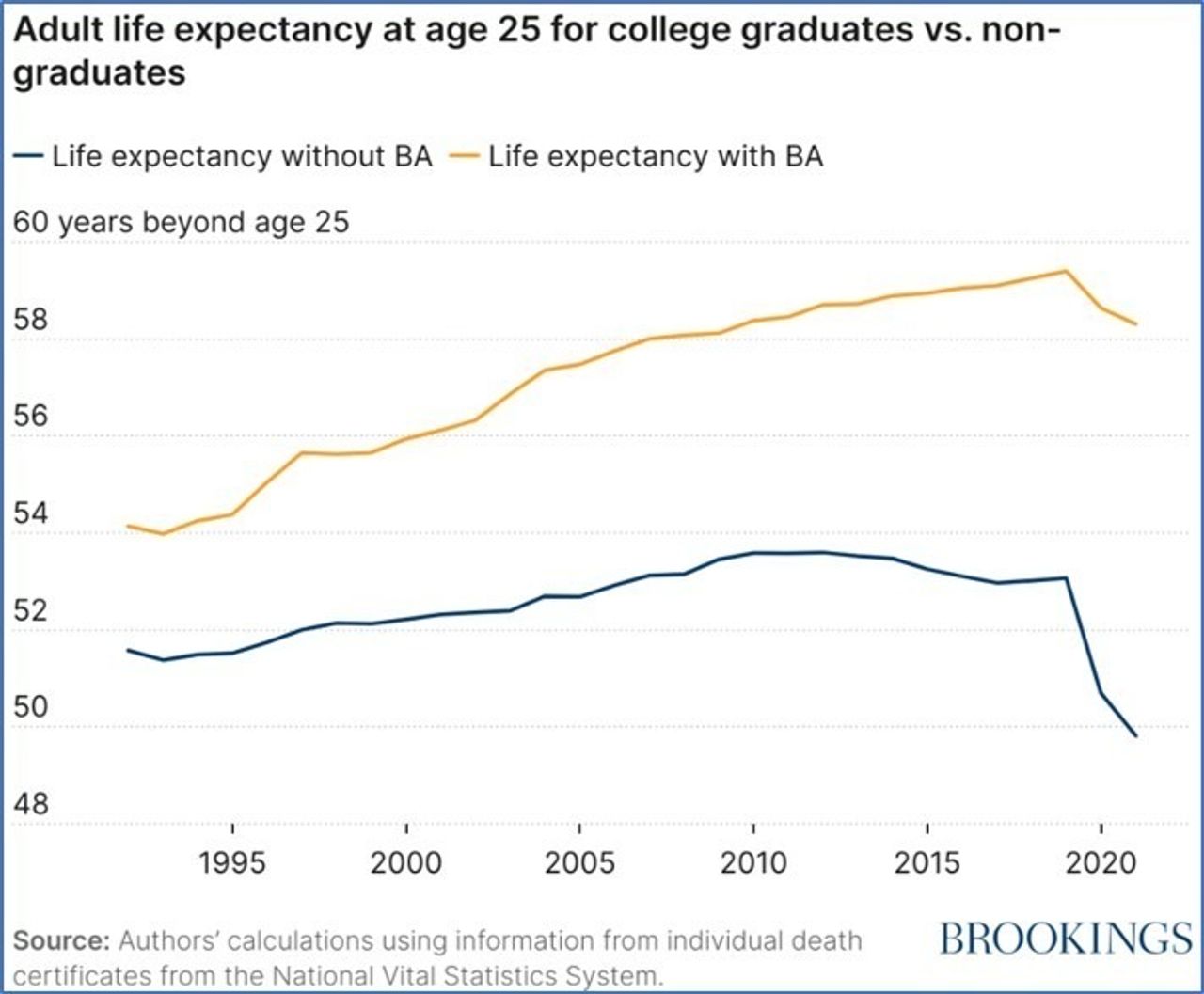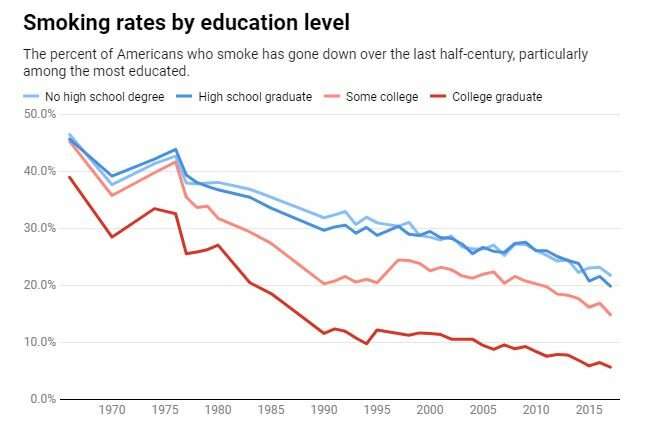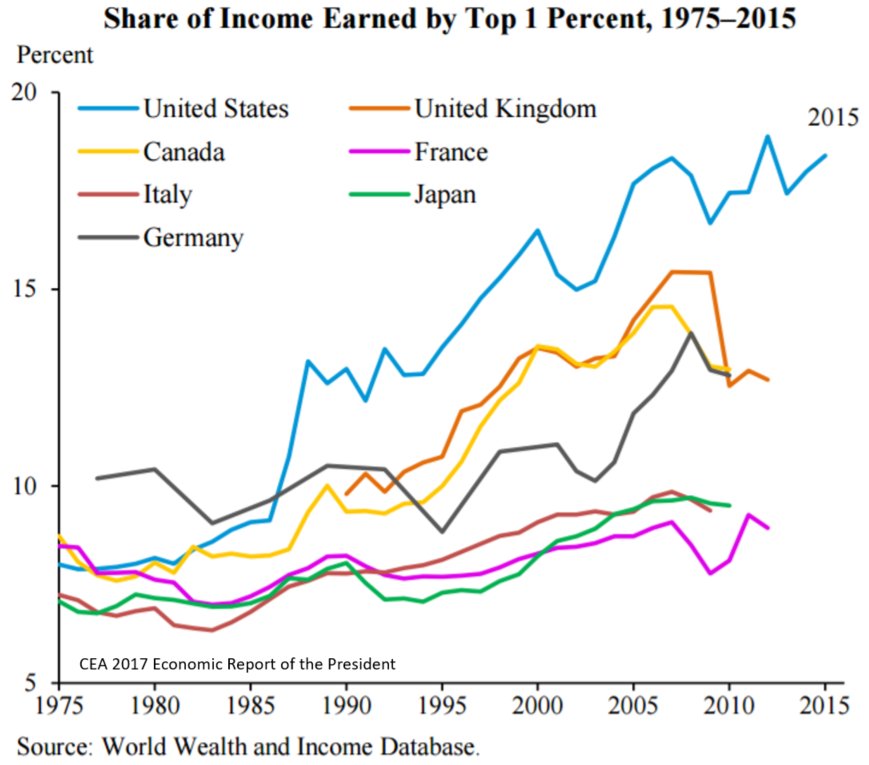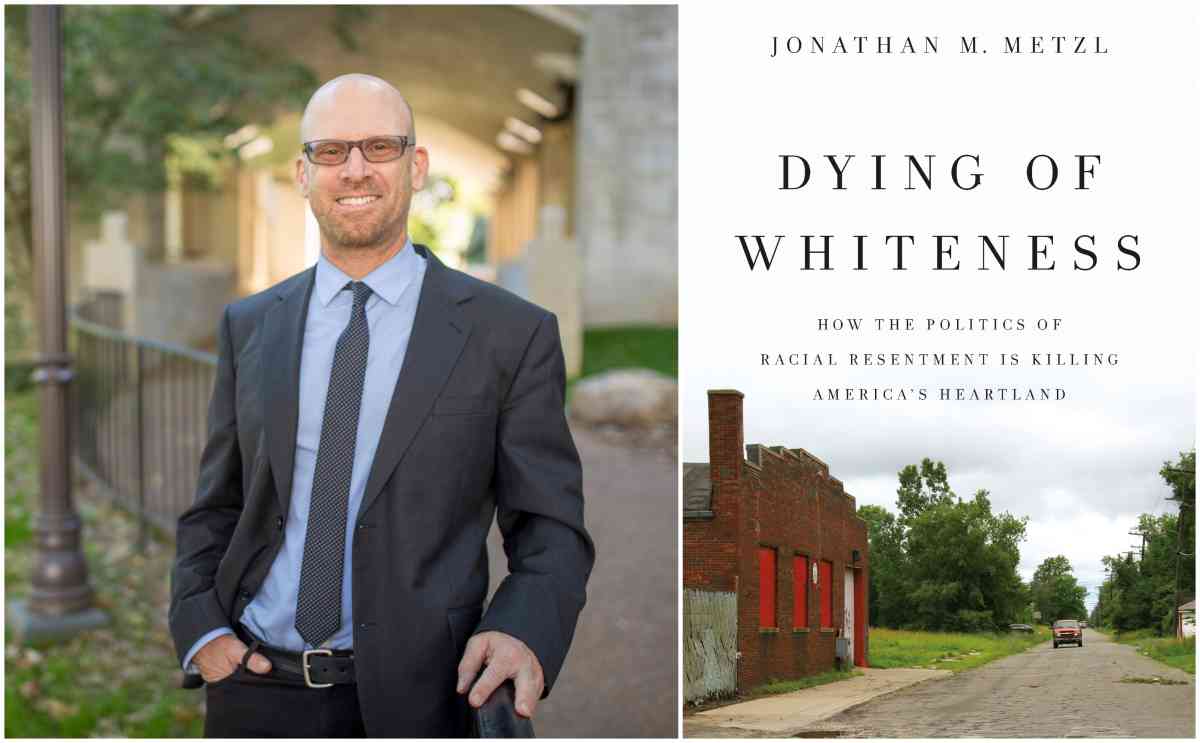We all are aware of how the economic conditions in this country have changed over the last 30-40 years. Where once assembly line manufacturing was the main driver of the GDP here in the US now it’s high-tech engineering, microchips and software, industries that require far fewer employees but those with greater education. These changes in the economy have brought with them demographic changes as millions of high school graduates lost well paying jobs with benefits while people with a college degree were in ever greater demand, and therefore saw at least a modest increase in their income and wealth.

One unexpected outcome of these economic changes is the effect on the overall health of the American people caused by a massive growth in ‘Deaths of Despair’ that is drug overdoses, suicide and alcoholism. ‘Deaths of Despair and the Future of Capitalism’ by Anne Case and Angus Deaton examines the increase in drug overdoses, suicide and alcoholism from both an economic and sociological perspective, both authors are retired professors of economics at Princeton University and Professor Deaton was awarded the Nobel Prize in Economics in 2016.

‘Deaths of Despair’ begins by demonstrating just how large a problem drug overdoses, suicides and alcoholism have become. In fact these social diseases were actually causing a decline in the average life expectancy of Americans before the Covid-19 pandemic. The book then goes on the show how these ‘Deaths of Despair’ reside almost exclusively in the white male population without a college degree, exactly the part of the population that has seen the most economic turmoil in the last 40 years. That turmoil being the driving force behind the despair a large part of our population now feels.

The central portion of the book is a detailed examination of how the economy has changed over the last 40 years and why damage generated by those changes seem to have almost targeted white males with only a high school education or less. In addition to the lost of income in going from a well paid factory job with benefits to a low paid service job with few benefits ‘Deaths of Despair’ also considers such factors as the loss of pride and community that accompanied the switch from buildings cars at General Motors to flipping burgers at McDonald’s. At the same time social changes of the last few decades added to the despair of white, blue-collar males. The advancement of both woman and minorities only increased the feeling of lost prestige and privilege.

Then, at just the time when these changes were generating despondency within a large section of the population the pharmaceutical industry began a campaign of selling synthetic, non-addictive opioids as a cure all for any kind of pain. Of course we now know that OxyContin and its relatives are actually highly addictive and can even act as gateway drugs to worse opioids like heroin and fentanyl. The callous greed of the drug companies who made billions by turning millions of Americans into addicts, or in all too many cases corpses is graphically detailed.


In the final section of ‘Deaths of Despair’ the authors give their recommendations on how to rebalance the economic system so as to better serve all Americans not just the top 1% or even the better educated. To be honest however the authors are academics and as such they are cautious in their suggestions.

The most fundamental change put forward in ‘Deaths of Despair’ is a complete reform of the healthcare system in the US, which the authors contend does not even meet the criteria of a true capitalist marketplace. Not only are the drug companies and health insurance corporations criticized in detail but hospitals, ambulance services and even doctor’s associations are shown to be guilty of acting as an Oligopoly. (An Oligopoly is a small group of merchants or corporations that by colluding together rather than competing virtually become a monopoly, raising prices while using their power to destroy any competitors) According to the Authors this is why Americans spend more for their healthcare than any other nation while both life expectancy in the US and approval of our healthcare system rank amongst the lowest for any industrialized, wealthy country. In ‘Deaths of Despair’ the authors estimate that a through reform of the health care system could free up as much a a trillion dollars a year in GDP that could be used to maintain our infrastructure, improve education etc, etc, etc.

While reform of the healthcare system is the author’s main recommendation they also suggest a stronger social safety net for those who lose their jobs due to changes in the economic system, the safety net must be of longer duration and include retraining for newer jobs. On the other hand they do not recommend simply raising taxes on the wealthy as a means of fixing income inequality nor do they endorse programs like the Universal Basic Income (UBI).

Now, back in May of 2019 I reviewed the book ‘Dying of Whiteness’ by Jonathan M. Metzl, see my post of 5 May 2019, which covers much the same subject as’ Deaths of Despair’. Mr. Metzl however was a state health official while Professors Case and Deaton are among the world’s leading economists so there is a very different perspective in the two books, to my mind in a way that they compliment each other.

So while I do highly recommend ‘Deaths of Despair and the Future of Capitalism’ I do so with the proviso that it is a very technical book written by scholars who are among the best in their profession. Those readers who really want to understand the complexities of our current situation, both economic and political will gain a great deal from it.
